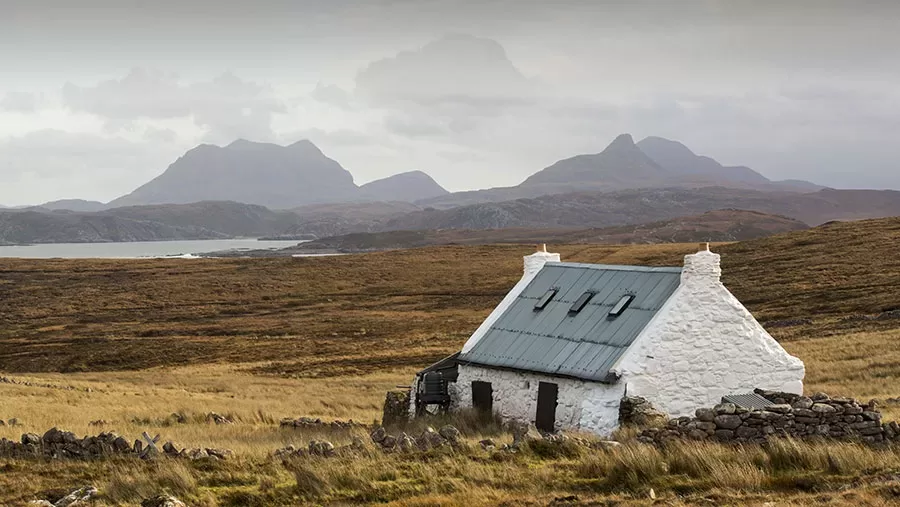Retro Alert: This Milk House column was published exactly 10 years ago. And here’s to a great 10 years since then.
*
Several years ago BBC News ran a story on Ian MacDonald, a quiet man with pink cheeks that is the last known Scottish crofter to swim his cattle across the sea from the Isle of Sky. Scottish crofting is a farming tradition in the Highlands and Islands of Scotland that dates back to the 19th century. Crofters are mostly tenants that raise sheep and beef cattle before typically selling them to a farmer who can finish them out on the richer grass in the south. The Highlands and Islands consist of crofting “townships,” in which the poorest ground is shared among all crofters for common grazing land. Despite legislation to preserve the tradition, crofting communities continue to shrink. Most crofters now have additional jobs to support themselves.
The 79 year-old MacDonald is not only one of the few crofters remaining on the Isle of Sky, but the last one to carry out a practice once common around the bay. The BBC suggests that it was once a common sight to see cattle paddling through the water at low tide certain times of the year to reach the next grazing ground. Men in ferrying boats on both sides of the group have to make sure one animal doesn’t turn back and confuse the rest. MacDonald, in his younger days, used to swim next to his cattle. In the report he looked away from the camera before humbly mentioning that he never lost an animal in six decades of ferrying.
Those who continue to croft represent a deep heritage and preserve a lifestyle inherent to a country’s history. Ian MacDonald, in particular, is the last existing member of a culture and a way of doing things. What the report does not mention is that once he is gone the practice of swimming cattle across the bay will only exist in books and the stories of old men. In addition to being a proud crofter, he is a reminder of a farming past left behind.
Each farm embodies its own history in the things that it hordes. Shops, amongst their dust, grease and stripped bolts can tell a rich synopsis of a farm in parts that no longer have any use. They collect the broken pieces that shed from the barn, the equipment, and everything else on the farm. They hold the tools needed to fix them and the parts that were anticipated for the next time the same thing broke down, but were never used. We have plow shims and disk blades for machines that we haven’t owned since I was born. Often, when looking for a nut or a washer, I hold up a piece of shaped metal with bolt holes. My father gives me a date, a name of something we no longer use, and maybe a story.
Sometimes, the symbols of a past are inescapable. If you stand at the edge of our pond and look down you used to be able to see three silos spaced along the valley, all in a row. One of them is ours. It looms over our free stalls and calf hutches. It was the tallest thing for the next mile until my grandfather’s silo, before the new owners tore it down. I have vague recollections as a child seeing a blower attached to it and filling it with silage, but fonder memories of watching my father climb to the top of it with a giant Christmas star, long extension cords connected together, and a nervous expression. Now, like many farmers, we have bunkers. Still, the way we used to farm towers above us, only useful for its aesthetic value. A red barn with a blue silo next to it is still the iconic image of the American farm, even if the silo is empty. At some places by the pond the silo can be seen when the farm itself cannot.
Farming is a cash flow venture where often just as much goes out as comes in. Sometimes it can be hard to remember that we’re still moving in a singular direction, stepping past people, memories, and the way we used to do things. As an old Toby Keith song says, “The more things change, the more they never seem the same.” Dairy farming is also a demanding endeavor, one that often doesn’t allow a farmer to stop in his tracks, put his hands on his hips, and contemplate where he had just come from and what he left behind. Regardless, the past still remains, tucked into the corner of shops, rising out of the valley, or looking at us in the camera, reminding us that these were the things that we did, and that there was poetry in it. Ian MacDonald had been crofting for over 60 years. A voice off screen asked him how much longer he would keep with it. “At least another 20 or so,” he said, and the entire crew laughed with him. The camera stayed on him and eventually his smile faded. “I don’t know,” he said quietly, looking past the lens. His took on a somber expression. “One day at a time. One day at a time.”
This article is part of The Milk House Column series, published in print across four countries and two languages. It can also be found at themilkhouse.org.
This article appeared in a similar form in Progressive Dairyman and The Dairy Mail.
Ryan Dennis is the author of the novel The Beasts They Turned Away.

